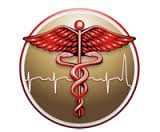
In essence, the nursing profession has very much been around since the beginning of time, though has drastically evolved over the course of history. Today, nurses are one of the most important professions within the health care industry and are learned a wide range of occupational duties that are utilized within a variety of settings throughout the world. Here’s an in-depth history of nursing and how it’s progressed to the state where it’s today.
Beginnings of the Nursing Profession
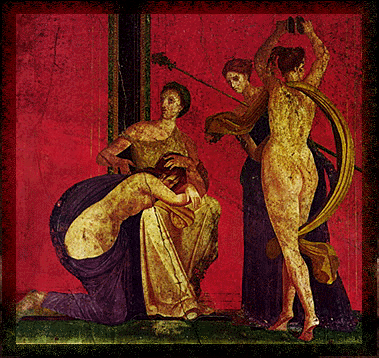
It is believed that the first recorded aspects of nursing place the inception of the profession during the height of the Roman empire, around 300 A.D. It was during this time that the Empire sought to place a hospital within every town under its rule. As such, there were many “nurses” during that time who assisted in in-patient medical care within the newly created hospitals, alongside doctors. As the Roman empire became the Byzantine empire, they further innovated within the field by creating 2 fully-developed hospitals within the great city of Constantinople, which housed both male and female nurses. These nurses were known as hypourgoi and helped to push forward nursing on a more global scale. However, it’s important to note that nursing became much more popularized in Europe during the middle ages, due primarily to its spread by the Catholic church.
Nursing in the Middle Ages

Featured Programs
When taking a glimpse at nursing in the Middle Ages, there was a myriad of advancements and innovations that were implemented within the nursing industry during these years, helping to form some of the roots of modern nursing. During this period of time, the industry was still largely based on religion, with the vast majority of available nurses consisting of nuns and even monks. Hospitals functioned in a myriad of ways, housing lepers and refugees among the typical sick and injured patients. It was due to this that a nurse’s role within the hospital involved a wider range of duties than may be seen today.
Around the late 500’s to early 600’s, the first Spanish hospital was created in Merida, Spain, with many of its nurses being supplied by the Catholic church. They were explicitly told to care for all of the sick, no matter their nation of origin or the religion they belonged to. While many of these European hospitals began to fall into disrepair in the 800’s, Emperor Charlemagne came to the decision to restore and equip these hospitals with all of the latest medical equipment of that time. The Emperor also demanded that hospitals should be attached to every cathedral and monastery within Europe, which helped to spur demand for even more nurses.
It was during the dawn of the 10th and 11th centuries that nursing began to expand, due primarily to a number of different rulings within Europe. For one, monasteries started housing hospitals inside their premises, as well as a separate infirmary, though this was only to be used by those that identified as religious. Within these monasteries, nurses were made to provide patients with any type of service that they asked for or required, even outside of general health care services. This model of nursing became increasingly popular throughout many countries, primarily of Germany and France, providing the general outline for how nurses are expected to treat their patients today. Nurses were often asked to provide assistance and care by traveling to neighboring areas in order to make house calls.
Not only did many monasteries house hospitals, it was also around this time that each church was required to have a hospital contained within the structure. However, these churches were more difficult to maintain than their monastery counterparts, due in large part to the fact that monasteries existed within the countryside, while churches were often set in the city, meaning that more people would require the services of the nurses and doctors. As such, the priest within each church was required to assist with the hospital that resided within their church. This proved successful in both the short and long term and allowed Germany to craft well over 150 hospitals between the years of 1200 and 1600, expanding the role of nurses within Europe dramatically.
The mid-1000s also saw a rise in what is known as charitable houses, as they were brought over to England by the Normans during their conquest and eventual capture of that very country. This type of health care facility was different from those of churches and monasteries, due in large part to nurses providing certain richer customers with alms and other medicines. The alms, in particular, were utilized in burial preparations, thus becoming highly sought after. This style of aid was distinctly new from anything seen in the past and seemed to usher in a new era of nursing.
Unfortunately, as Europe entered the beginning of the 17th century, nursing as a whole became exceedingly diminished for a wide variety of reasons. For one, most monasteries were shut down during the Protestant reformation, as well as the hospitals within them. The nuns that had been working as nurses were made to leave the profession and stay at home. It was due to this that nursing largely stagnated between the 17th and 18th centuries in Europe, as there were simply not enough hospitals available. However, in the few areas of Europe in which the Protestant rule had not spread and Catholics still retained control, the role of nurses remained largely the same, diminished only in numbers.
In fact, those that practiced nursing were beginning to develop new services as well, particularly the act of offering care to those within the estate of their patron’s. While staying at the estate, these nurses would often be required to perform the duties typically undertaken by apothecaries, physicians and surgeons. While nursing faced more tumultuous times during the years to come, nurses remained in demand more than ever and were often tasked with administering certain health care services to patients that might have been wary of the care provided by actual doctors.
That being said, the roots of modern nursing began to take shape in the 18th and 19th centuries. During these years, Britain and North America were at the forefront of innovation within the industry, though with each introducing different forms of nursing to the market.
Florence Nightingale and the Introduction to Modern Nursing
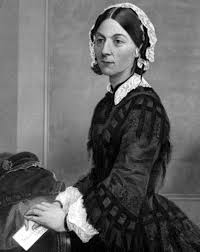
When looking at the rise of modern nursing within Europe, it’s important to note that Florence Nightingale helped to change the nature of the profession forever. Around the early to late 1900’s, nursing was becoming more important than ever, as nurses were needed on the front lines of the many wars being waged, from the Crimean War to the Civil War. Nurses were sent to attend to the sick and wounded soldiers in battle. Florence Nightingale began her illustrious nursing career as a nurse within the Crimean War that took place in the mid 1850’s, tending to injured soldiers on the battlefield. During this time, deaths from injuries were commonplace, due to the lack of general hygiene and the huge amount of fatal infections that resulted from these wounds.
Upon encountering this, Nightingale asked for and received aid from the British government that allowed for much better hygiene throughout the battlefield and nearby hospital. It was due to this that the rate of death from infections dropped drastically in but a short period of time. Throughout the rest of her life, Nightingale advocated for sanitary living conditions for patients, as well as providing similar designs to be implemented within hospitals, an ideal that has spread throughout the entirety of the nursing profession throughout the following years.
Modern Nursing Within Europe
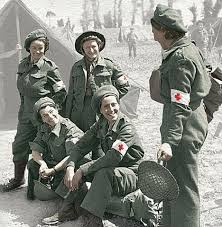
It was because of the influence of Florence Nightingale that nursing as a profession became what it is today, though both Europe and the U.S. offered different advancements throughout the period leading up until now. As for Europe, the nursing profession flourished when, in 1860, Nightingale opened the very first nursing school in London, which was known as the Florence Nightingale School for Nurses. This helped to pave the way for more and more schools being founded and opened officially for prospective nurses to receive actual training and education for the field they were entering, thus providing roots for modern nursing.
While Florence Nightingale is one of the most popular nurses in history, it is not to be believed that she was the only notable figure in the field of nursing. In fact, there were a few others that helped to provide advancements to nursing in the 1800’s. For instance, Clarissa Harlowe Barton was a nurse who founded the American Red Cross soon after the Civil War, while Linda Richards and Agnes Elizabeth Jones helped to create a number of nursing schools throughout the U.S. and Japan during the mid to late 1800’s. These women worked tirelessly to provide high quality health care to anyone that needed it, providing the model for nursing that still exists today.
Within Europe, Germany, France and Britain were at the forefront of bringing nursing into the modern age. Germany brought back what are known as deaconesses in the early 1800’s. A deaconess is basically a nurse in charge of providing health care for other women in the area. Despite the fact that deaconesses had all but vanished for a few centuries before then, they were brought back by Theodor Fliedner in 1836 when he opened a deaconess motherhouse situated nearby the Rhine river. This move allowed for the floodgates to open in Germany, popularizing this form of nursing. By the dawn of the 20th century, there were reportedly well over 5,000 deaconesses in all of Europe, primarily Germany. This number swelled to nearly 50,000 by the late 1950’s. In fact, deaconesses were even found to be located in other countries as well, such as the U.S. and Canada.
As for France, they also seemed keen on contributing to the nursing profession in the late 1800’s and early 1900s. In France, nursing was still largely centered around religion. Within the nearly 1,500 hospitals located all throughout France, the nursing staff was comprised of well over 10,000 Catholic nuns in 1870. This number increased even more so in the next 40 years to 15,000. However, at the dawn of the 20th century, the French government moved to create a system wherein hospitals were more heavily secularized, in order for hospitals to receive the proper support that they needed from outside of the church. This allowed for a better quality of care for all patients.
The first World War gave a huge boom to nursing within the country. While many of the nurses that joined the ranks during this time were untrained and seemed to leave the profession not long after the war ended, it brought about a larger focus on nursing by France that was missing before then, which was further signified by the offering of a national diploma in nursing in the year 1922. It’s also important to note how important nursing came to be within all military situations over the years. Queen Victoria of England began to assign Military General Hospitals to be made in the 1860’s, starting with that of the Royal Victoria Hospital. This move was largely brought about because of the necessity for nursing within the Crimean War.
These military hospitals were developed solely to provide care to soldiers and military patients. As such, many nurses throughout Europe started being appointed directly to these hospitals around that time. However, one thing that still stood out was that many of the available nurses at the time were simply untrained, in both the profession and in how to deal with the exceedingly adverse conditions brought about during the time of war. While the health care being administered was useful and still helped to save lives, it was becoming clear that nurses would need to undergo some sort of training to become better equipped to handle any type of condition.
Modern Nursing in the U.S.
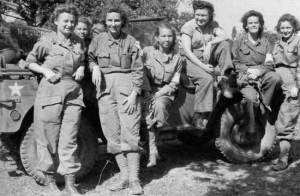
Nursing within the United States took a decidedly different path than in similar countries. Due to the absence of a stronghold of Catholicism within America, the nursing field was not comprised of nuns. Nursing officially began in the early 1700’s when the first almshouse was opened in Philadelphia. However, many of the hospitals that were created in the ever-expanding United States throughout the next 2 centuries were largely derived because of the fear from local governments of diseases spreading to the more wealthy population. Therefore, they did not receive the proper funding that would have allowed for the training of nurses.
It should also be noted that the only roles for a nurse within these hospitals during this period of time revolved primarily around tending to the elderly and those with sicknesses, such as the flu and the common cold. These almshouses were rarely equipped to deal with any actual illnesses that needed to be treated immediately. However, most nurses spent their time tending to soldier’s wounds within the Civil War, as well as joining the American Red Cross soon after the war. It wasn’t until the dawn of the 20th century that actual progress and modernization within the field of nursing began to take place.
There were a number of factors that contributed to the general rise in nursing. The first of these revolved around the state of the nursing schools that had already existed at this time. While these schools were somewhat useful at training nurses, they were solely controlled by nurses. Although this did have its advantages, they did not have enough resources to properly innovate and advance the overall profession. This was changed in 1900 when schools became controlled by hospitals instead, allowing for a more hands-on approach to training, which proved highly useful in giving prospective nurses the necessary tools to train efficiently.
Before this, nurses-in-training would only learn through the medical books that they were taught with. This change in schooling allowed for a bigger emphasis to be placed on earning a nursing degree, which paved the way for a total of 294,000 trained nurses, in the late 1920’s, in comparison to around 150,000 untrained nurses. At this time, most of these nurses were women. One of the more ambitious nursing programs brought to America was Frontier Nursing Service, which was founded by Mary Breckinridge. This organization was designed to provide nursing care to poor citizens living in the more rural areas of the U.S., further expanding the scope and definition of all that nursing entailed.
Post WWI Nursing in Europe and U.S.
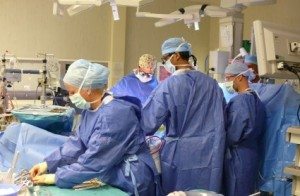
Many of the modern advancements in nursing took place after WWI and into WWII, when technology was starting to take a bigger role in the world. At the dawn of WWI, Britain’s nursing presence was striking low, with just over 10,000 nurses enrolled in the 2 premier military nursing services in the area, which included the Princess Mary’s Royal Air Force Nursing Service and Queen Alexandra’s Imperial Military Nursing Service.
The nurses enrolled in this service were sorted into Staff Nurses, Sister, Principal Matron and Matron-in-Chief. Despite the low presence of nurses in Britain at this time, the war created a resurgence throughout the country. For example, at the beginning of the war, it is estimated that there were just over 2,200 members within Queen Alexandra’s Nursing Service, while this number ballooned to well over 10,000 nurses by the conclusion of the war.
Within the U.S. and other countries, WWII proved even more beneficial in regards to how it pushed respective governments to provide more support for nursing. Within Britain, nurses involved in the QAIMNS service mentioned previously would travel with soldiers to the battlefront of every campaign Britain was involved in during the war. While nurses were not commissioned officers at the onset of the war, they were soon given the ability to gain rank, up to Brigadier, due to the fact that they largely faced the same horrific conditions as the soldiers themselves.
The nursing profession within the United States became as popular as it is today due primarily to its huge focus within WWII. Many women from around the nation were desperate to give care to the soldiers that were fighting across the seas. As such, the entire prospect became an attractive one, as nurses were being called heroes more than ever during this period. This led to thousands upon thousands of women volunteering for the cause. Despite the fact that many nurses went in untrained, they received a wealth of specialty training while overseas by dealing firsthand with the atrocities they were presented with on the front. As such, they brought home a large tool-set of skills after the war that were valuable within the medical profession.
The government took notice of this and placed millions of dollars into the ever-expanding healthcare industry, just at the moment when the technological age was beginning, allowing for an increase in medical innovations. For instance, more and more schools began to offer additional nursing courses that would lead to licensed and registered nurses, as well as Masters and Doctorate nursing programs in the 1950’s and 70’s respectively. The American Nurses Association also saw the publishing of an American Journal of Nursing, which allowed both nurses and doctors to stay up-to-date on the latest studies and research pertaining to the field.
The 20th century also paved the way for a larger and more expanded role for nurses, introducing a number of distinct areas in which nurses could specialize in, including such specialty care as orthopedics, trauma, critical care, pediatrics and neonatal nursing. Throughout the years leading up to the current day, nursing also saw a shift away from the typical description of a doctors assistant to performing many of these duties themselves, including everything from performing procedures to prescribing medication. In fact, in today’s industry, nurses can choose to receive training in well over 200 unique healthcare specialties.
Common Nursing Jobs in the Current Industry
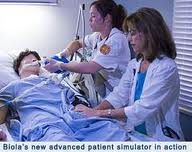
When looking at how the nursing profession has progressed since its inception when nurses were largely Catholic nuns to the bustling industry it is today, it’s important to understand that the reason for this occurring is due primarily to the added specialties that are current and prospective nurses could choose to focus in. As nursing is generally all about the care of a person, a nurse’s duties can cover a large variety of different practices. Some of the most common of these include pediatrics, neonatal, disabilities, women’s health communities, family, and orthopedic nursing, among others. This allows for a huge amount of diversity within the field of nursing that has never use to be present before the last 50 or so years.
Education Required of a Nurse Today

While in the late 1800’s and 1900’s, those looking to become nurses would simply go to school and achieve certification in nursing, it’s now possible to attend nursing school and choose any number of degrees to graduate with. Here’s a small look at what those are. For instance, in the U.S., you can choose to receive a diploma in nursing, which merely requires 3 years of study and a certain amount of hours of hospital-based work. This type of degree is the oldest such nursing degree and has been present since the late 1800s.
Today, students have the added option of choosing to pursue an associate’s degree in nursing, as well as a bachelor’s degree, master’s degree, or even a doctorate degree in nursing. Each successive degree requires extra years of study, though also gives students better career opportunities within the field of nursing upon graduation, an advantage that only presented itself in the 1960s and 70’s. Upon obtaining any one of these degree types, students will then have the opportunity of taking a licensure examination and becoming registered nurses.
While the role of nurses in the world has expanded dramatically within the last 2 centuries, it’s clear that nursing will continue to grow into an even more important aspect of the health care industry within the years to come.
Related: